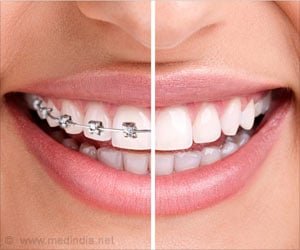The Future of Orthodontic Care: AI Revolutionizes Dental Braces

- AI-driven tool revolutionizes fitting of dental braces
- Digital twins streamline treatment, reducing patient discomfort
- Future implications extend to broader medical device development
Dental braces have long been a standard treatment for correcting misaligned teeth, but they often come with challenges such as discomfort, frequent adjustments, and lengthy treatment durations. However, recent advancements in artificial intelligence (AI) are poised to revolutionize orthodontic care. A team of researchers from the University of Copenhagen and 3Shape has developed a groundbreaking AI tool that promises to streamline the process of fitting dental braces, offering patients a more efficient and personalized treatment experience (1✔ ✔Trusted Source
Adverse effects of orthodontic treatment: A clinical perspective
).
Revolutionizing Orthodontics: How AI is Reshaping Dental Braces
The innovative AI tool utilizes scanned imagery of teeth and bone structures from human jaws to predict the optimal design of dental braces through accurate 3D simulations. This technology marks a significant departure from traditional methods that rely heavily on the subjective judgment of orthodontists and involve trial and error.
Professor Kenny Erleben, from the University of Copenhagen’s Department of Computer Science, highlights the transformative potential of this AI-driven approach. By leveraging detailed digital imitations known as digital twins, the team has created a database of ‘digital dental patients.’ This database not only facilitates the customization of braces but also holds promise for broader applications in medical device development, such as hip implants.
How It Works
The AI algorithm analyzes the scanned imagery to determine the precise adjustments needed to straighten teeth effectively. Unlike conventional approaches, which often require multiple visits to the orthodontist for adjustments, the AI tool minimizes the need for trial and error by providing orthodontists with comprehensive insights into where braces should exert pressure.
Benefits of AI-Driven Dental Braces
One of the primary advantages of this AI-driven solution is its potential to reduce the number of orthodontic appointments and adjustments required throughout the treatment process. By optimizing the fit of dental braces from the outset, patients can expect shorter treatment durations and reduced discomfort.
Moreover, the scalability of the technology holds promise for population-wide impact. As the database of digital dental patients expands, the AI tool can be fine-tuned to cater to diverse patient demographics, ensuring more precise and tailored orthodontic treatments.
Looking ahead, Professor Erleben envisions a future where AI-powered simulations and digital twins play a central role in optimizing medical interventions beyond orthodontics. By harnessing vast amounts of data, healthcare professionals can simulate treatments and adapt medical devices to target patients across entire populations more precisely.
This paradigm shift towards data-driven and personalized healthcare not only benefits individual patients but also offers potential cost savings and resource efficiencies for healthcare systems. As AI continues to evolve, its integration into orthodontic care represents a promising frontier in improving patient outcomes and enhancing the overall quality of dental treatment.
The emergence of AI-driven technologies in orthodontics signifies a significant milestone in the evolution of dental care. By leveraging sophisticated algorithms and digital imaging techniques, researchers have developed a groundbreaking tool that promises to enhance the precision, efficiency, and comfort of dental braces.
Advertisement
As this technology continues to mature, it holds the potential to revolutionize not only orthodontics but also broader areas of medical device development and healthcare delivery. With AI as a guiding force, the future of orthodontic treatment appears brighter than ever before, offering patients a path to straighter smiles with fewer hurdles along the way.
“With AI as a guiding force, the future of orthodontic treatment appears brighter than ever before, offering patients a path to straighter smiles with fewer hurdles along the way.”
Advertisement
Reference:
- Adverse effects of orthodontic treatment: A clinical perspective – (https://www.ncbi.nlm.nih.gov/pmc/articles/PMC3770235/)
Source-Medindia
Source link
#Future #Orthodontic #Care #Revolutionizes #Dental #Braces



